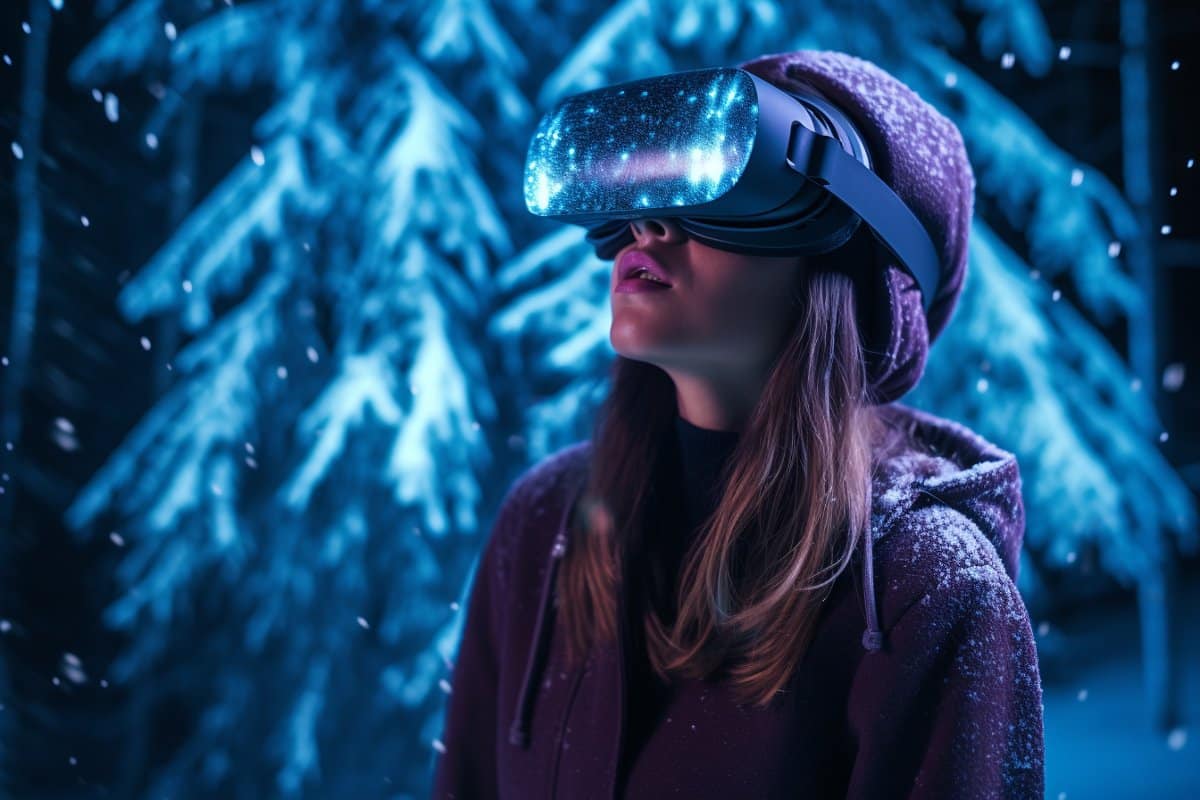Summary: Researchers have made a groundbreaking discovery in non-contact technology that can simulate cold sensations in virtual reality (VR) while maintaining consistent skin temperatures. By combining cold airflow and light, they are able to induce cold sensations without any actual temperature shifts, revolutionizing the way thermal experiences are simulated in VR environments and enhancing the user’s immersion.
This new technology holds immense promise for enhancing VR experiences by providing instantaneous and sustained thermal sensations.
Key Facts:
- This non-contact technology offers cold sensations without altering skin temperature.
- It utilizes a combination of cold airflow and a light source to simulate rapid temperature changes.
- This innovation is expected to greatly enhance immersive experiences in VR, especially in the Metaverse, by simulating real-world thermal experiences.
Source: University of Tsukuba
Our skin plays a key role in perceiving temperature and the world around us. For example, we feel the coldness of the outdoors when our cheeks turn cold, and we sense the arrival of spring when our skin gradually warms up.
However, repeated exposure to the same stimuli can desensitize us to new sensations, making it difficult to sense temperature changes in a VR environment when switching scenes. This phenomenon, known as “temperature acclimatization,” can hinder our ability to accurately perceive temperature changes.

In this study, the researchers have developed a non-contact technology that simulates a cold sensation while maintaining nearly constant skin temperature. This innovative approach leverages the human body’s sensitivity to rapid temperature changes.
The technology combines cold airflow and a light source to instantly switch between a quick cold and a gentle warm stimulus, inducing a cold sensation without significant fluctuations in skin temperature.
Evaluation results have shown that this system can provide a virtual cold sensation without any actual change in temperature.
Furthermore, the researchers have successfully replicated a cold sensation that is equally intense as those experienced with continuous skin temperature changes.
This breakthrough technology offers a unique way to simulate skin sensations without altering the body’s physical state.
It has the potential to enable immersive VR experiences, including in the Metaverse, by offering not only instantaneous thermal sensations like a sudden cold breeze but also long-lasting thermal experiences, similar to those encountered during international travel.
Funding: This work was supported in part by grants from JSPS KAKENHI (JP21H03474, JP21K19778) and in part by JST SPRING (JPMJSP2124).
About this neurotech and sensory perception research news
Author: YAMASHINA Naoko
Source: University of Tsukuba
Contact: YAMASHINA Naoko – University of Tsukuba
Image: The image is credited to Neuroscience News
Original Research: Closed access.
“Integration of Independent Heat Transfer Mechanisms for Non-Contact Cold Sensation Presentation with Low Residual Heat” by KURODA, Yoshihiro et al. IEEE Transactions on Haptics
Abstract
Integration of Independent Heat Transfer Mechanisms for Non-Contact Cold Sensation Presentation with Low Residual Heat
Thermal sensation is crucial for understanding the world around us and enhancing our ability to interact with it. Therefore, the development of thermal sensation presentation technologies holds great potential as a novel method of interaction. Traditional technologies often leave residual heat in the system or on the skin, which can affect subsequent presentations.
Our study focuses on presenting thermal sensations with low residual heat, particularly cold sensations. To mitigate the impact of residual heat in the presentation system, we have adopted a non-contact approach. To address the influence of residual heat on the skin, we present thermal sensations without significantly altering skin temperature. Specifically, we have integrated two highly responsive and independent heat transfer mechanisms: convection via cold air and radiation via visible light, providing non-contact thermal stimuli.
By rapidly alternating between perceptible decreases and imperceptible increases in temperature on the same area of skin, we are able to maintain a near-constant skin temperature while presenting continuous cold sensations.
In our experiments involving 15 participants, we observed that when the cooling rate was between -0.2 to -0.24 °C/s and the cooling time ratio was between 30 to 50%, over 86.67% of participants perceived only persistent cold without any warmth.

